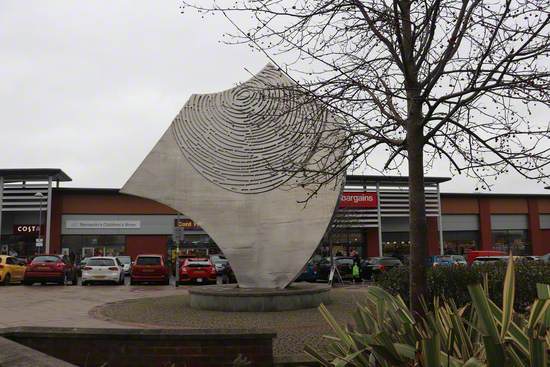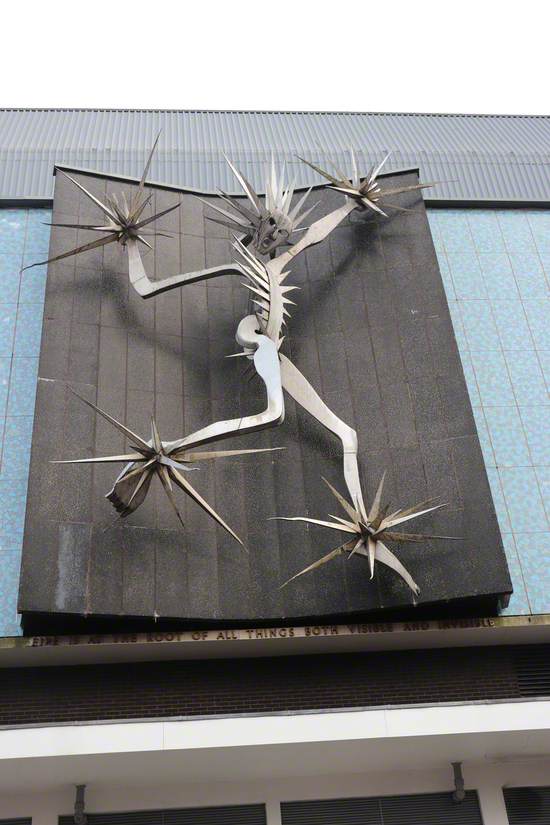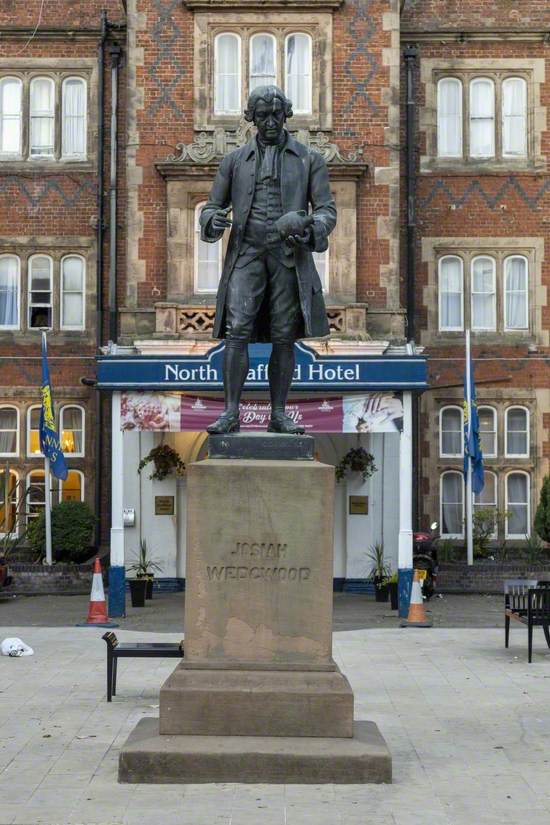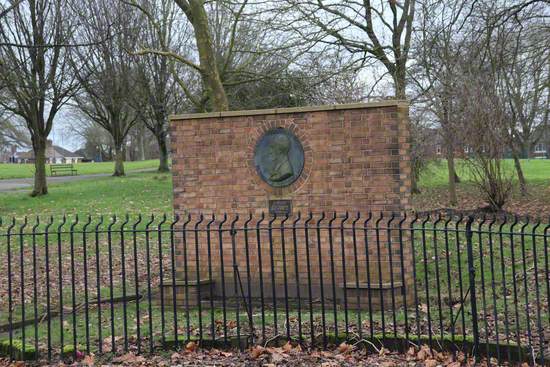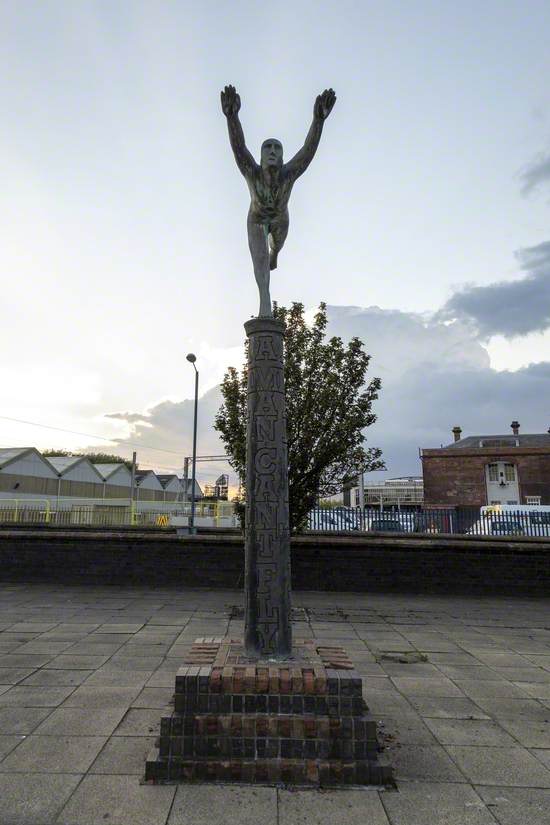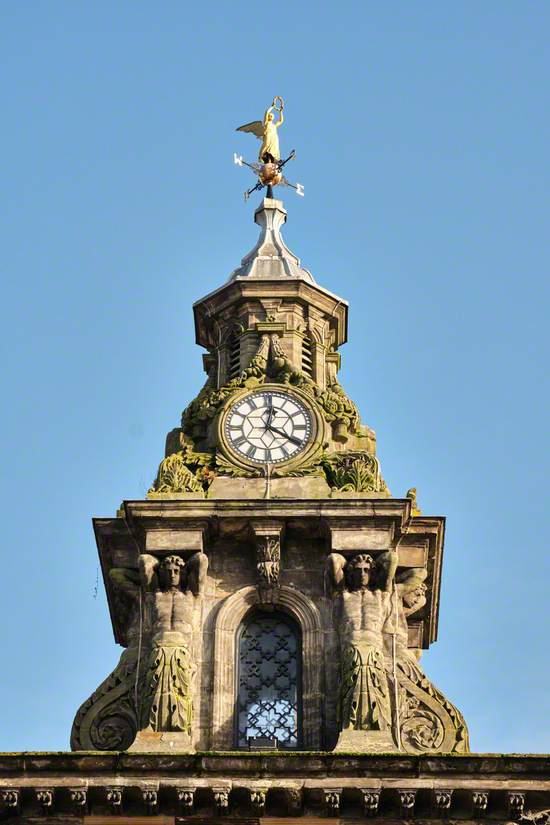Aye-up duck!
These public sculptures showcase the pottery-making centre of the UK, Stoke-on-Trent.
Commemorative statues celebrate the people who founded the factories, such as Josiah Wedgwood, whilst other artworks remember the people who made the ceramics, which were exported and treasured across the world. Other industries and activities flourished in Stoke-on-Trent, including steel working and coal mining, as well as football, and they too are remembered in the city's public art.
A vibrant arts scene in Stoke-on-Trent contributes to new artworks being added to the city's streets and parks on a regular basis.
These are some of my personal favourites.
Ta-ra duck!
The Face of Stoke-on-Trent
A giant art installation in the city centre, created from 3,550 photographs to reveal the iconic face of 23–year-old Jozef Clark. Jozef’s face was chosen to represent the city, as a young person in the here and now, facing forward on his journey. The mosaic is made up of the photographs collected during the project. People from across the city were also featured in five pop-up exhibitions as 'The Face of SOT on Tour' throughout 2018. Artist Helen Marshall was commissioned to create the artwork as part of Stoke-on-Trent’s bid to become UK City of Culture 2021.
Industries of The Potteries
Made from over 6,000 shaped bricks, this long relief on the front of The Potteries Museum depicts images of the history and industries of the Stoke-on-Trent area. The images include a working mine with miners and pithead, and a pottery with kilns and potters at work. Transport is also referenced with a horse and cart carrying coal, and several canal boats in dock. The centre of the relief has a large motif that is formed by half a cartwheel, and a radiating circle of hands.
G. H. Downing (active 1980/1981) and Frank Murrier (active 1980/1981)
Coloured bricks
H 400 x W 3300 cm
Tunstall Shard
This sculpture is inspired by a shard of pottery from Roman times that was found in an underground oven when this former Wedgwood pottery site in the city was being redeveloped. The artwork is 300 times larger than the shard it is based upon and shows a fingerprint, thought to date back hundreds of years, found on the original piece of pottery. A special dedication ceremony was held to celebrate The Shard being unveiled, with pupils from the nearby Mill Hill Primary School also burying time capsules at the site of the new sculpture to mark the event.
Robert Erskine (b.1954)
Wrought stainless steel, masonry & concrete
H 10000 x W 9000 x D 9000 cm
The Spirit of Fire
Nicknamed Jack Frost, this spiky metal sculpture of a man symbolises the fires that fuelled the city’s main industries of ceramics, mining and steelworks. The sculptor spent some time in Stoke-on-Trent looking for inspiration and said '... it hit me that the sculpture must have something to do with the great fires which dominated the life of the city'. This huge sculpture has terrified generations of Stoke children visiting the city centre, but it is a well-loved local landmark.
Privilege
The sculpture reflects the local area’s past achievements and future aspirations. The pots and gear-wheel represent the pottery and steelmaking industry which used to be nearby; and the tree and ladder signify growth and development. The sculpture, set in a small park landscaped to host the sculpture, is seen by over 30,000 motorists every day and has become a central landmark for the city.
Josiah Wedgwood (1730–1795)
Josiah Wedgwood was a Burslem-born potter, entrepreneur, and abolitionist. Founding the Wedgwood company in 1759, he developed improved pottery bodies by systematic experimentation, and was the leader in the industrialisation of the manufacture of European pottery. This iconic statue, sited opposite to the entrance to the railway station, greets visitors who arrive into Stoke-on-Trent by train. Many people arriving into Stoke this way are confused by the geography of the town, discovering that they are not in the city centre, as that is in Hanley, a mile or two up the hill!
Josiah Wedgwood (1730–1795)
Another commemorative monument to Josiah Wedgwood, sited in a park in Etruria, an area of the city Wedgwood himself named. A prominent abolitionist fighting slavery, Wedgwood is remembered too for his 'Am I Not a Man And a Brother?' anti-slavery medallion. He was a member of the Darwin–Wedgwood family, and he was the grandfather of Charles and Emma Darwin.
unknown artist
St Anne's marble & Sicilian marble
Thomas Wedgwood (1771–1805)
Thomas Wedgwood is best known as a pioneer of photography. Prevented from working in his father Josiah's potteries by constant headaches, he conducted a series of scientific experiments, presenting two papers to the Royal Society on the equal temperature of red-hot objects. In 1802, he presented a paper on his discovery of a method of copying objects by exposing paper soaked in silver nitrate to the sun. When the objects were removed, their silhouettes would appear on those parts of the paper which had not been exposed to the light. However, he could not find a means to fix his pictures which prevented his method from becoming popular. Nevertheless, his photograms, if kept in the dark, would last easily for sixty years or more.
James Brindley (1716–1772)
James Brindley was one of the most notable engineers of the eighteenth century and is often referred to as England's first engineer and the 'father of English canals'. He was born in Tunstead in Derbyshire and lived much of his life in Leek in Staffordshire. The statue stands on a tall square-sectioned plinth, facing the canal he was responsible for building. He is shown in contemporary eighteenth-century dress with his right hand resting upon a theodolite, an instrument he would have used for surveying land for the canals. His left arm is bent at the elbow and tucked behind his back.
Arnold Bennett (1867–1931)
The statue, celebrating Stoke-on-Trent's most famous literary son, was unveiled on what would have been his 150th birthday. The author Arnold Bennett was born in Hanley in 1867. His reputation as one of England's greatest realist writers was firmly established by his death in 1931, but it is for his depictions of the Potteries that he is best known. Books include ‘Anna of The Five Towns’ and ‘Clayhanger’. The statue shows Bennett at the age he would have been in 1910 when he was at the height of his career. The year 1910 is also the year in which the six towns of the district federated into the one area of Stoke-on-Trent. Though there are plaques in Stoke-on-Trent remembering the writer, this is the first statue tribute to him in the city.
Michael Talbot (b.1959) and Carl Payne (b.1969) and Horticon Ltd (founded 1990)
Bronzed resin
H 200 cm
Unearthed (Lidice)
This work commemorates the link between Stoke and the Czech village of Lidice. Lidice was destroyed by the Nazis in 1942 in retaliation for the assassination of Nazi Lieutenant General and Deputy Reich Protector of Bohemia and Moravia Reinhard Heydrich. Hitler is said to have exclaimed ‘Lidice shall die’, and hundreds of men, women and children were killed – either executed or transported to concentration camps. The destruction of Lidice inspired the then Stoke-on-Trent City Councillor Sir Barnett Stross and hundreds of the city’s miners to pledge a day's pay per week to rebuild the village. They gathered at the location of the substation in September 1942 to make the pledge that 'Lidice shall live'. Lidice was eventually rebuilt.
Golden (the Flame that Never Dies)
The sculpture is installed on the site of the former Goldendale Ironworks and alludes to the steel previously manufactured in the area. The title references the golden flame that sprang from the original Goldendale ironworks which previously lit the Chatterley Valley – locals for many years referred to the iron works as ‘the flame that never dies’. According to the artist: ‘The idea behind the sculpture is simple. The 19 metre high Corten steel sculpture is designed as a visible beacon for Chatterley Valley that extends the vertical uplift of Goldendale when viewed from road level. The piece makes reference to the natural and industrial heritage of the Goldendale Valley’.
Wolfgang Buttress (b.1965)
Laser-cut Corten steel & 1,500 glass spheres
H 21000 x W 750 x D 750 cm
Sir Stanley Matthews (1915–2000)
A large block plinth surmounted by three depictions of the footballer Stanley Matthews in action as if during a game. The plinth is surrounded by 12 mosaic rounds set into the floor depicting among others Sir Stanley Matthews, the FA Cup 1953, Stoke City football strip and badge. There are two additional information panels explaining the mosaics and listing Matthews' career highlights. When Sir Stanley died in 2000, his coffin was driven around the city and people lined the streets to say goodbye. Check out the detailed images of this sculpture taken by Art UK's Volunteer Photographer Michael Kentish. They are really good!
Julian Jeffery and Carl Payne (b.1969) and Andy Edwards (b.1964)
Bronze
Gordon Banks (1937–2019)
A life-size portrait statue of the Stoke City and England international football player Gordon Banks wearing an England kit and holding the Jules Rimet World Cup won at Wembley in 1966. The statue was unveiled by footballing legend Pelé when he visited Stoke in 2008 and was on display at the Potteries Museum and Art Gallery before moving to its current site at the Britannia Stadium in 2015.
A Man Can't Fly
A figure of a man balancing horizontally upon one leg (arabesque, a ballet pose), as if like Superman in flight. It stands atop a column with the words 'A MAN CAN'T FLY' repeated vertically around its circumference. Like the statue of Josiah Wedgwood, this sculpture is sited near Stoke-on-Trent railway station. It can be seen from the train if you are travelling southbound out of the city.
Hand with Chronos
This sculpture of a large oversized upright hand with a figure sitting in its palm, stands at the end of platform two at Stoke-on-Trent railway station. It's a long way down the platform, meaning that the only people who see it up close are those lucky enough to be travelling first class between London and Manchester, as the very end carriages of these trains are only ones which stop that far down the platform. The figure has a lion's head, is wrapped in a serpent's tail, holding a key to its chest and staff in hand. Wings protrude from the hips. The hand itself is detailed and includes fingerprints.
Colin Minton Campbell (1827–1885)
At the time of this statue's unveiling in 1887, it stood next to the Minton pottery factory. Sadly, that factory has been demolished, so Minton Campbell now stands with his back to a big Sainsbury's.
Angel of Victory
This life-size gilded copper angel holding a laurel wreath stands on top of the old Town Hall in Burslem. The angel was immortalised by Arnold Bennett in his books 'Clayhanger' and 'The Old Wives Tale' where Burslem is thinly disguised as Bursley. The angel is also rumoured to have been the inspiration for Robbie Williams' hit song, 'Angels', in 1997. (I'm not sure I believe that...) It's very high-up, so Art UK's Volunteer Photographer Tony Bennett has done a great job to get some good close-up shots of the statue. Very impressive!
Still Life
This sculpture represents the bottle kilns that once dominated the area’s landscape. The grouping of six reflects the towns of Stoke-on-Trent that have fused together but still retain their own identity. The nine-metre-high structure allows passers-by to walk through its arches. At night the structure is lit from within, creating graceful ribbons of light that move in and out of shadow. This is probably the sculpture I have driven past the most times, as this is my route in and out of the city when I visit my parents. It's a landmark telling me that I am back in The Potteries.
The Steel Man
This sculpture of a steelworker illustrates the struggle of the Shelton Bar steelworkers to retain their livelihood and preserve the future of their works. Unfortunately they lost their fight, and after more than 100 years of continuous operation the blast furnaces were shut down on 23 June 1978 with 2000 workers losing their jobs. Rolling works continued at the works for another two decades but the whole works were closed in April 2000. On a personal note, this statue reminds me of being awake during the night in 1997 with a new baby, as I could hear Shelton Bar steelworks from my home in Newcastle-under-Lyme. It was comforting to know that I wasn't the only person awake at that time.
Colin Melbourne (1928–2009)
Stainless steel
H 180 x W 150 x D 150 cm
The Potteries Museum & Art Gallery
Explore artists in this Curation
View all 23-
 G. H. Downing
G. H. Downing -
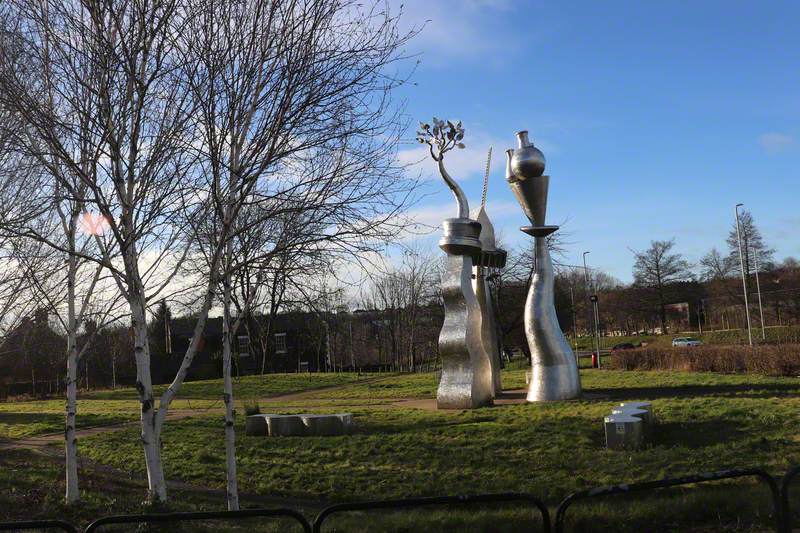 Denis O'Connor
Denis O'Connor -
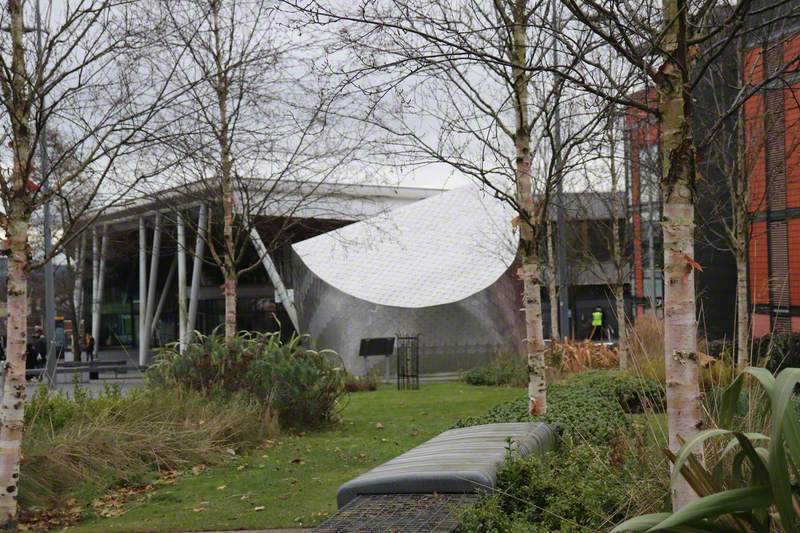 Nicola Winstanley (b.1984)
Nicola Winstanley (b.1984) -
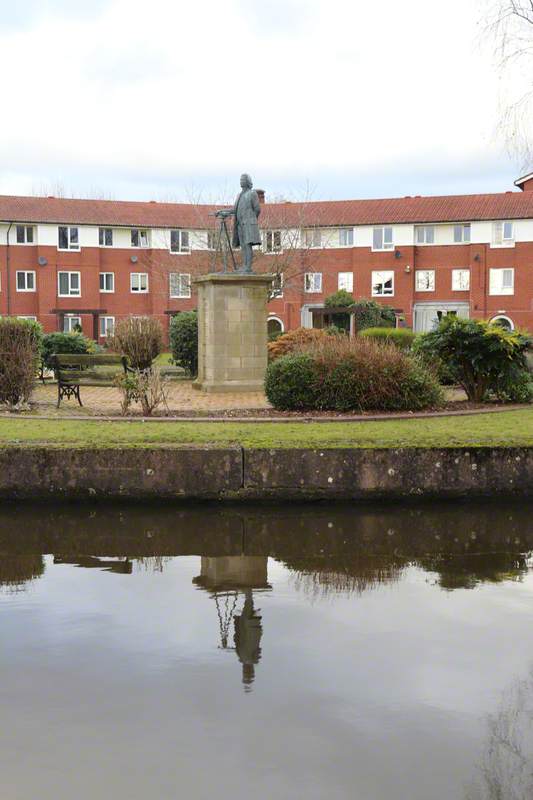 Colin Melbourne (1928–2009)
Colin Melbourne (1928–2009) -
 Julian Jeffery
Julian Jeffery -
 Frank Murrier
Frank Murrier -
 Wolfgang Buttress (b.1965)
Wolfgang Buttress (b.1965) -
 Oliver Barratt (b.1962)
Oliver Barratt (b.1962) -
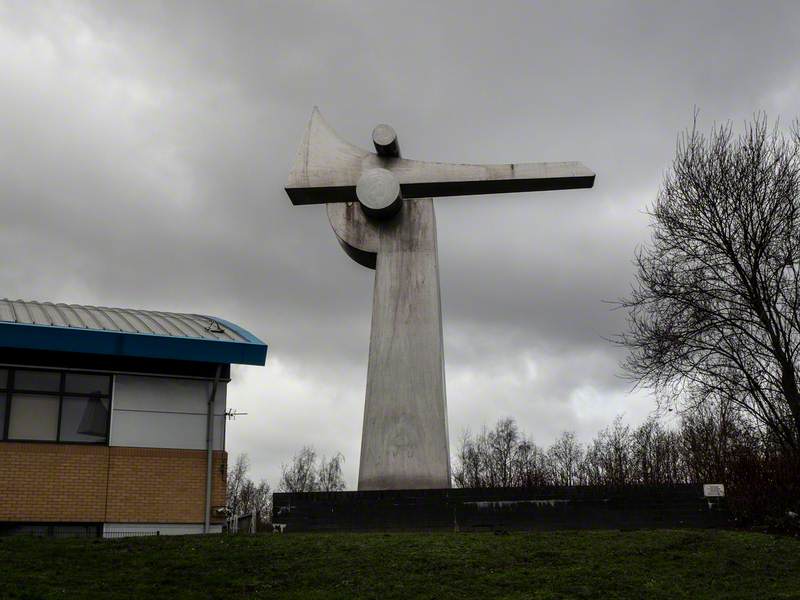 Robert Erskine (b.1954)
Robert Erskine (b.1954) -
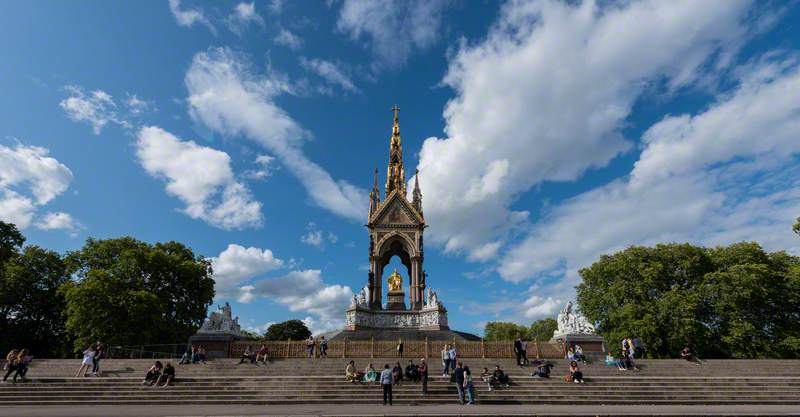 Thomas Brock (1847–1922)
Thomas Brock (1847–1922) - View all 23


